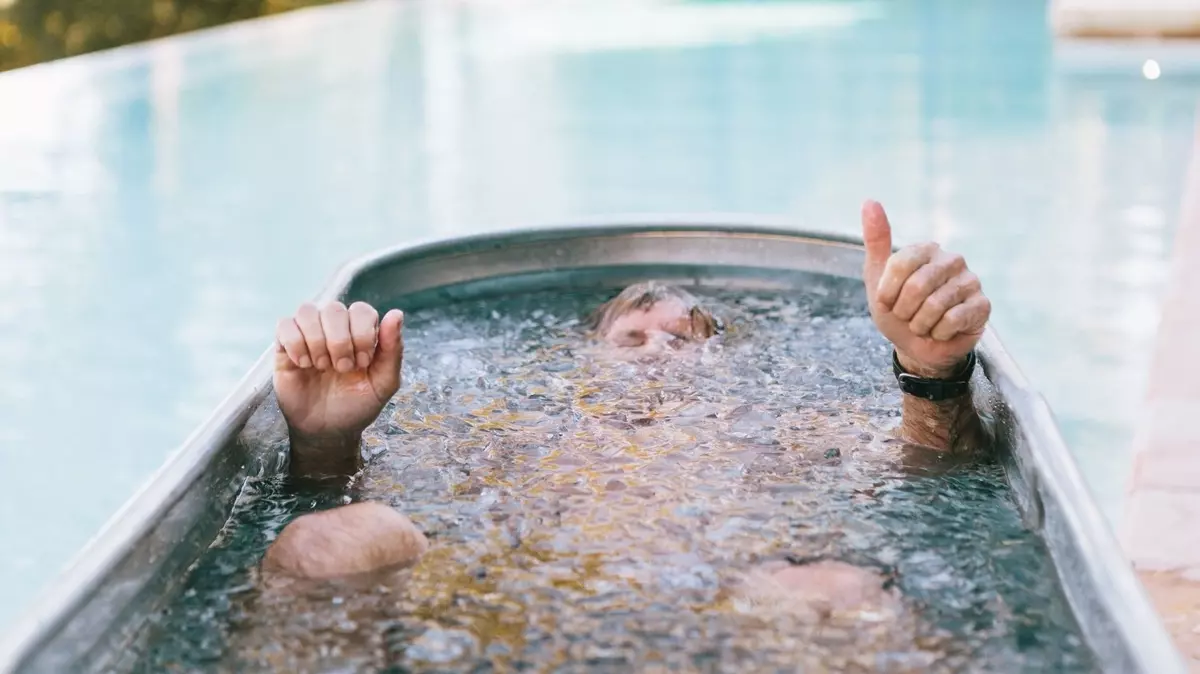Introduction to Ice Baths
Ice Baths, also known as cold water immersion, have gained significant attention in recent years for their benefits in muscle recovery and overall well-being. Whether it’s athletes seeking faster recovery or individuals looking for a new wellness practice, ice baths have become a popular method of rejuvenation. While the concept of submerging oneself in freezing water might seem extreme, the benefits can be profound. This article explores the science behind ice baths, their various benefits, best practices, and potential risks, providing a comprehensive guide for anyone curious about this growing trend.
The Science Behind Ice Baths
The effectiveness of ice baths largely stems from how cold exposure impacts the body. When you immerse yourself in cold water, the blood vessels constrict, which is known as vasoconstriction. This process helps reduce inflammation and swelling in muscles, making it an ideal recovery tool after intense physical activity. Moreover, the cold temperature helps numb the nerve endings, reducing pain and soreness. Once you step out of the ice bath and warm your body, the blood vessels dilate, flushing out metabolic waste from your muscles, further aiding recovery.
Additionally, cold exposure triggers the release of endorphins, the body’s natural painkillers, which contribute to an improved sense of well-being. Regular ice bath practice can also improve circulation, boost the immune system, and help reduce delayed onset muscle soreness (DOMS). For those engaged in strenuous exercise or high-performance sports, the science of cold therapy offers compelling reasons to incorporate ice baths into their recovery routines.
The Benefits of Ice Baths
Ice baths are not just for athletes; their benefits extend to anyone looking to improve their physical and mental health. One of the most significant advantages is their ability to enhance muscle recovery and reduce inflammation. For athletes, this means quicker recovery times between workouts or competitions, allowing them to perform at their best. For non-athletes, reduced inflammation can help manage pain from chronic conditions like arthritis or injuries.
In addition to physical recovery, ice baths have been linked to mental health benefits. The shock of cold water exposure triggers a fight-or-flight response in the body, which can enhance mental resilience. Over time, regular cold exposure can reduce anxiety, improve mood, and increase mental clarity. The release of endorphins and adrenaline during an ice bath session also creates a natural “high,” leaving individuals feeling invigorated and energized.
Furthermore, ice baths can improve sleep quality. Cold therapy helps activate the parasympathetic nervous system, promoting relaxation and recovery. For those struggling with insomnia or poor sleep, incorporating an ice bath into their evening routine may lead to more restful nights.
Best Practices for Ice Baths
While ice baths offer numerous benefits, it’s essential to follow certain guidelines to maximize their effectiveness and ensure safety. The optimal temperature for an ice bath ranges between 50°F and 59°F (10°C to 15°C). Anything colder can be too intense for beginners and may increase the risk of cold-related injuries such as frostbite or hypothermia. It’s recommended to start with a short duration, such as 5-10 minutes, and gradually increase the time as your body adapts to the cold exposure.
Preparation is key to a successful ice bath. Hydrate before and after the bath to prevent dehydration, and consider wearing a bathing suit or light clothing to avoid direct contact with ice. It’s also helpful to have warm clothing or a towel nearby for when you exit the bath, as your body temperature will drop significantly. Additionally, breathing techniques can help manage the initial shock of cold water. Focus on slow, deep breaths to calm the nervous system and reduce the urge to hyperventilate.
For those new to ice baths, it’s advisable to consult with a healthcare professional, especially if you have pre-existing health conditions such as cardiovascular issues, as cold exposure can increase heart rate and blood pressure.
Potential Risks and Considerations
While ice baths can provide substantial benefits, they are not without risks. Cold exposure can be dangerous for individuals with certain health conditions, such as heart disease or respiratory issues, due to the strain it places on the body. The sudden drop in temperature can cause a spike in blood pressure and heart rate, which may lead to complications for those with cardiovascular problems. It’s essential to consult with a doctor before trying ice baths, especially if you have any underlying health concerns.
Another potential risk is hypothermia, which can occur if the body’s core temperature drops too low. This is more likely to happen if the ice bath is too cold or if you stay submerged for too long. To avoid this, always monitor the temperature of the water and limit your time in the bath to the recommended duration. Frostbite is another rare but possible risk, particularly if you’re in contact with ice directly on your skin for extended periods.
Lastly, ice baths may not be suitable for everyone. Some people find the cold exposure too uncomfortable or may experience increased muscle stiffness rather than relief. It’s crucial to listen to your body and adjust your approach if necessary. Alternatives such as contrast water therapy, which involves alternating between hot and cold water, might be a better option for individuals sensitive to cold.
Conclusion: Should You Try Ice Baths?
Ice baths offer a range of physical and mental health benefits, making them a valuable tool for anyone looking to improve recovery, reduce inflammation, and boost overall well-being. Athletes, in particular, can benefit from faster recovery times and reduced muscle soreness, while non-athletes may appreciate the mood-enhancing and sleep-improving effects of cold therapy. However, like any wellness practice, ice baths come with potential risks and should be approached with caution, especially for those with pre-existing health conditions.
For those willing to embrace the cold, ice baths can become a powerful addition to a self-care or fitness routine. The key is to start slow, follow best practices, and consult with a healthcare professional if you have any concerns. Whether you’re looking to speed up muscle recovery or simply improve mental resilience, ice baths offer a refreshing and invigorating way to support your health.


